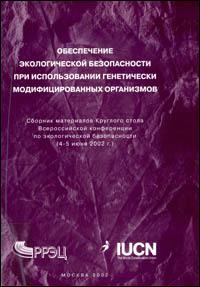

Related content
Инструмент для локального выявления прочих эффективных зональных природоохранных мер (ОЕСМ) : Первое издание
Other effective area-based conservation measures (OECMs) are sites outside protected areas that deliver effective and long-term in situ conservation of biodiversity. Biodiversity conservation may be the primary objective of the site, a secondary objective of a site that is managed for other purposes, or it may be an unintended consequence of the way the site is managed. OECMs may be governed and managed by governments, private entities or Indigenous peoples and local communities, or a combination of these. This tool guides an assessor through three steps to apply eight criteria which determine if a site qualifies as an OECM as set out under the Convention on Biological Diversity. For sites which do not currently meet all the criteria, the tool serves to highlight areas where further information or improvements in governance and management are required.
Глобальный план действий в отношении видов
The Global Species Action Plan (GSAP) is a critical initiative developed to support the implementation of the Kunming-Montreal Global Biodiversity Framework (GBF), to address the increasing biodiversity loss worldwide. The GSAP outlines strategic interventions and actions to conserve and sustainably manage species while ensuring equitable benefits. Emphasizing the critical role of species in ecosystem stability, human livelihoods, and cultural heritage, the GSAP seeks to prevent extinctions, reduce threats, and ensure equitable benefits from species use. Implementation involves diverse stakeholders, including governments, Indigenous peoples and Local communities, NGOs, academia, and businesses, fostering cooperation at global, regional, and local levels. The GSAP underscores the collective responsibility to safeguard Earth’s rich biological heritage for future generations.
Руководство и методическое пособие по оценке воздействия в контексте Всемирного наследия
As the World Heritage Convention celebrates its 50th anniversary in 2022, over 1100 sites around the world are recognized as World Heritage – places that are so valuable to humanity that there conservation has been deemed our collective responsibility. Yet many of these exceptional places face increasing pressure from diverse types of development projects within and around the sites. Assessing the impacts of such projects is essential to both prevent damage to World Heritage and identify sustainable options. This Guidance and toolkit explains the process for achieving these goals. Offering practical tips and tools including checklists and a glossary, it provides a framework for conducting impact assessments for cultural and natural heritage sites.
Руководство КВВ МСОП по конфликтам и сосуществованию человека и дикой природы : Первое издание
Поскольку конфликты между человеком и дикой природой становятся все более частыми, серьезными и широко распространенными во всем мире, их решение, как известно, является сложной задачей, и многие усилия, направленные на решение этих конфликтов, с трудом достигают прогресса. Данное Руководство является важной инструкцией для понимания и разрешения конфликтов между человеком и дикой природой. Цель Руководства – заложить основы и принципы передовой практики с ясными практическими рекомендациями по оптимальному решению конфликтов и обеспечению сосуществования с дикой природой. Они были разработаны для использования специалистами-практиками по охране природы, лидерами сообществ, лицами, принимающими решения, исследователями, правительственными чиновниками и другими лицами. Сосредоточенные на подходах и инструментах для анализа и принятия решений, они не ограничиваются каким-либо конкретным видом или регионом мира.
Mesurer l’efficacité du droit de l’environnement à travers des indicateurs juridiques et des analyses de qualité
Les efforts visant à évaluer l’efficacité du droit de l’environnement au moyen d’indicateurs juridiques sont indispensables à un moment où le droit de l’environnement, sa mise en oeuvre et son application efficaces sont essentiels à la transformation mondiale vers une société durable. Le droit de l’environnement nécessite des outils qui permettent aux gouvernements et à la société en général de mesurer avec précision et d’informer sur la mesure dans laquelle le droit est correctement et efficacement appliqué. Les indicateurs juridiques environnementaux, avec leurs étapes méthodologiques de conformité correspondantes, fournissent la précision nécessaire pour mesurer l’efficacité de la Loi. Cette publication rassemble les idées juridiques présentées lors du 2e Congrès mondial du droit de l’environnement (décembre 2021) et met en valeur les travaux en cours sur les indicateurs juridiques environnementaux menés par la CMDE et ses partenaires.
The great reshuffling : human dimensions of invasive alien species
While the issue of invasive alien species (IAS) has important biological components, the human dimensions deserve much greater attention. Humans, with all their diversity of quirks, strengths, and weaknesses, are at the heart of the problem of IAS and, paradoxically, also at the heart of the solution. This compilation of papers delivered during a workshop on the human dimensions of the IAS problem, held in Cape Town, South Africa on 15-17 September 2000, covers some of the many causes, consequences and responses to this problem.
Socio-economic factors determining on-farm agricultural biological diversity in Zimbabwe : working paper
The effects of household characteristics on crop diversity are examined using household-level data based on a stratified random sample of 180 households from two districts in Zimbabwe, Uzumba-Maramba-Pfungwe and Tsholotsho.

